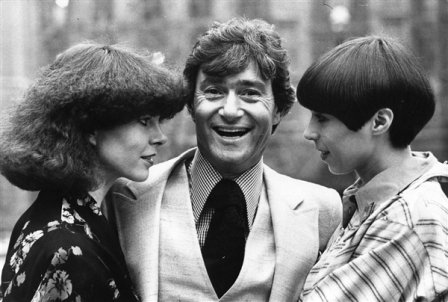Vidal Sassoon, Proud Pro-Israel Jew Who Fought in the Haganah, Z”L*
Can’t let the week go by without remembering Vidal Sassoon, * Zichrono LiVrachah[Blessed Be His Memory], who died on Wednesday at age 84. He was so much more than the famous, classy, chic hair stylist and the namesake of a famous haircare line of the ’70s and ’80s.

When I was a kid and saw ads on TV like the two videos below, my parents used to tell me that Vidal Sassoon was a Sephardic Jew who was pro-Israel. And we bought his shampoo and conditioner because, as he said in the ads, “If you don’t look good, we don’t look good.” Not only was he proud to be Jewish and a supporter of Israel, but he fought in the Haganah in 1947 to help make Israel an independent state. The son of Sephardic Jews of Greek and Spanish descent, his family was poor, and he had to live in an orphanage after his father abandoned the family. He went on to fight anti-Semites in Britain in his youth and later to fund other fights against anti-Semitism. His was an interesting story.
Watch the trailer from “Vidal Sassoon: The Movie
“ . . .
“ . . .
In 1948, he traveled to Israel to fight in Israel’s war of independence. An ardent Zionist, he went on to endow the Vidal Sassoon International Center for the Study of Antisemitism.
Vidal Sassoon, the hairdresser, has recounted his early days as a foot-soldier for an underground anti-fascist group dedicated to wiping out Sir Oswald Mosley’s far-Right movement after the Second World War.Sassoon was a teenage member of the 43 Group, an organisation formed in 1946 by Jewish ex-servicemen who returned from the frontline only to discover that Mosley, the leader of the British Union of Fascists and an admirer of Adolf Hitler, was spreading his message of hatred on the streetsof London.
More from “Vidal: The Autobiography “:
“:
Here I am, aged eight, with my five-year-old brother, Ivor, at the Spanish and Portuguese Jewish Orphanage in Maida Vale, northwest London. My mother, Betty, was forced to place me there for five years while she coped with desperate poverty.Mum, London-born and of Spanish-Jewish descent, was wonderful and brave, but the orphanage was so tough for me at first. Mum was only allowed to visit one Sunday a month and I used to cry myself to sleep.But in time I understood the plight she was in and I always adored her. She lived to be 97 and spent the last years of her life living near me in LA. . . .My father, Jack, on the other hand, was a playboy who had come to London from Greece and abandoned us all for another woman when I was three. My brother and I were both born in Shepherd’s Bush, but when my father left us, Mum took us to live with her sister Katie, a widow with three children, in a crowded tenement in Petticoat Lane, in the heart of the East End.As my aunt’s children got older, however, there wasn’t room for us all, and my mother had no option but to send me to the orphanage. She sat me down and promised I would be well looked after and would get a goodeducation. It helped that my brother joined me 18 months later.Our first school was Essendine Road, a Christian primary school with about 1,200 kids, where one learned very little.Before morning prayers, the teachers used to announce: ‘All Jews and Catholics may now leave.’ Unbelievable. . . .When war broke out in 1939, Ivor and I were evacuated to Holt, a small village in Wiltshire, where we were placed with a kind family – Mr and Mrs Lucas and their daughter, Veronica – and went to the local primary school.There were rather more cows and sheep than a city boy could cope with, but playing football with my schoolmates – and some of the German-Jewish refugee children who had also come to Holt and to our school – was huge fun. After a year with the Lucas family, my mother arrived. She rented a cottage in the village and we were together again as a family.My mother had remarried by then, and we soon grew to love the man we always called Dad, Nathan Goldberg. He gave up a good job as a foreman in a tailoring factory in London to work in a laundry in Wiltshire so that he and my mother could be with us.He would listen to Beethoven, read good books and take us to libraries in the nearby town of Trowbridge. I later realised how lucky we all were that Mum had met him. . . .[At age] 14, I started my hairdressing apprenticeship. I was appalled at the prospect as I wanted to be a footballer, but my mother insisted she’d had a premonition that this would be right for me, and she dragged me along to Adolph Cohen’s salon in Whitechapel.I loved the fact that there were lots of pretty girls around, but I had no interest in hair – that came much later.
What’s also interesting and ironic is that Sassoon created the famous haircut that enhanced Mia Farrow’s career. But their haircut was the nexus between a man who fought for Israel and battled Jew-hatred and a nutty woman (Farrow) who is anti-Israel and promotes Jew-hatred.
He was fine, and she is swine.
Vidal Sassoon, Z”L.
No comments:
Post a Comment